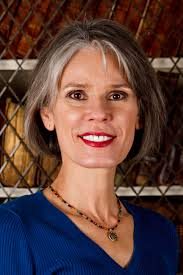
Women in the Time of the Tudors
This
essay complements the first MRL Adult Lecture of 2015. On January 26, Sarah Kennedy,
who visited last year to discuss Altarpiece, the first novel in her The Cross and The Crown series, returns to
discuss City of Ladies, the recently
published second book. The series
details the life of women in Tudor England. To prepare for this discussion, the following is
intended to refresh our knowledge of sixteenth century British history.
By
the early 1500s, a convergence of intellectual developments on the continent of
Europe brought a rebirth of ancient learning
and new humanist thinking to Tudor England.
In southern Europe the
Renaissance renewed interest in Greek and Roman culture and learning; in northern
Europe new religious thought emphasized
individual will and human involvement in events.

Translations in
English of the New Testament made the “word of God” accessible to lay people
without reliance on interpretation by the Church.
Economic and social conditions unique to England also added
to an unsettling of order.
An expanded English
urban middle-class centered around the cloth trade.
King Henry VIII depleted the national treasury
with costly foreign alliances and military misadventures.
Excesses in personal conduct, displays of
wealth, ecclesiastical privilege, and ostentatious pomp at all levels of the
Church fueled resentment against that institution by the general
population.
This popular disaffection,
personified in the chief royal councilor Cardinal Wolsey, provided cover for
the King to eliminate him, to act against the clergy, and to convert the wealth
of the Church to himself.
Precipitously,
the desire of the King to have his marriage to Katherine of Aragon annulled by
the Pope in order to marry Anne Boleyn created tension between the King and the
Church.
While all these factors played
a role, the King’s personal life propelled the passage of the 1536 Act for the
Dissolution of the Monasteries causing religious chaos that lasted for years.
Though two women were at the center of the
turmoil, the consensus among many historians is that women did not benefit from
it.
The belief in the inferior position
of women remained unchanged from previous centuries; however, from this lesser standing, women found
ways of being influential and active in the secular society.
Unfortunately their sisters in the convent
found their societal relevance denied.

Between
1536 and 1540 the monastic religious orders in England were dissolved.
Though the exact number is unknown, about 140
nunneries were closed, affecting about 1,600 nuns.
Most of the dissolved nunneries were very
small; in addition to their religious role, they were an important local institution.
Their abbeys and nunneries served as a refuge
for traveling gentry who wished to avoid the bread and board at the local
taverns.
The sisters educated local
daughters in reading and numbers and the gentry’s daughters, in addition, were
taught needlework and drawing skills.
The nuns served as the pharmacists and doctors in the neighborhood.

The
historical record is absent on what happened to these often penniless “former”
sisters.
Some made their way to
religious orders on the Continent.
Those
who stayed faced the same environment as other women in society of the 1600s,
plus being additionally burdened by being an age unsuitable for marriage and by their
own vows of chastity.
Returning to their
families was not always a viable choice.
Many of the nuns arrived at the monastery as the "spare" daughters to be
“dedicated to God” or as orphans abandoned on the door step.
These
women came into a secular society that espoused the Biblical interpretation
that women were to serve and obey a man, which not even the Reformation
theology challenged.
The sole function
of the woman was to marry, produce sons, and look after her home and
family.
Women from wealthy families were more constrained
in their opportunities than their less well-off sisters.
Usually the women of the upper ranks of
society had no control over a choice of a husband.
Their health was put at risk because they did
not nurse their children, resulting in frequent pregnancies and therefore at
greater risk of dying in childbirth.
In
contrast, common country and city women, though still enjoined by their Biblical
role, found economic necessity brought broader opportunities.





